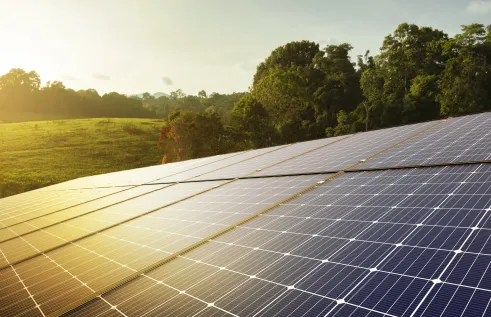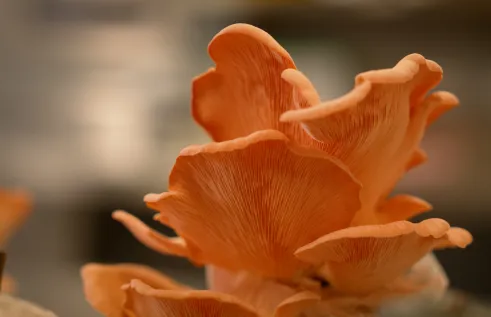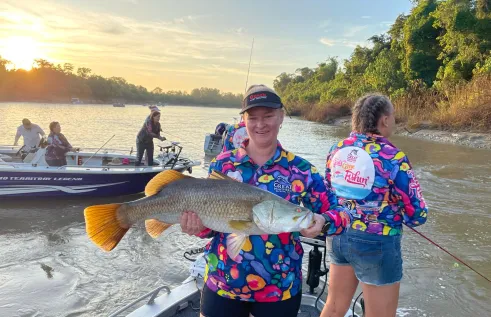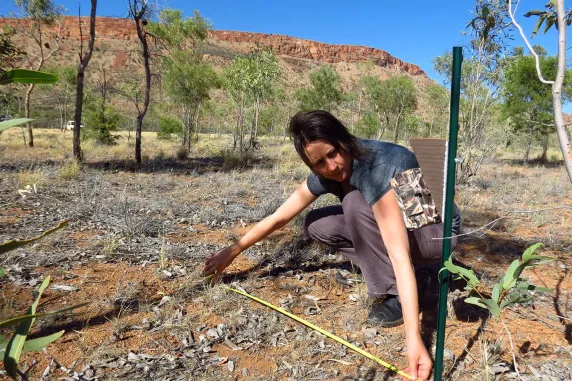News article
Wildlife flourishes when buffel removed
Scientists in Central Australia have confirmed that native wildlife will flourish in areas where the introduced weed buffel grass (Cenchrus ciliaris) has been removed.
A six-year study carried out by Charles Darwin University near Alice Springs found that ground cover changed and that native plants, animals and especially reptiles became more abundant after the invasive pastoral grass had been removed.
Senior Research Fellow Dr Christine Schlesinger at CDU’s Research Institute for the Environment and Livelihoods undertook the novel field experiment at several study plots at Simpsons Gap in the Tjoritja West MacDonnell National Park and the Alice Springs Desert Park.
“We examined the response of reptiles to areas where buffel grass had been removed and native plants were able to regenerate,” Dr Schlesinger said.
“Data showed an increase in 27 of 36 species of reptile in the years following weed treatment.
“The trend suggests negative impacts of buffel grass on reptiles are probably caused by broad factors like reduced prey or habitat diversity that affect multiple species.”
Dr Schlesinger said buffel grass posed a significant threat to biodiversity because of its wide distribution and ability to dominate diverse habitats such as those in semi-arid inland Australia.
Together with other research at the experimental sites on plant communities, ants, birds, and fire, this experiment provides direct evidence that removing buffel grass from heavily invaded areas benefits a variety of native plants and animals.
“It shows that even on a small scale, the removal of buffel grass from heavily invaded areas benefits native flora and fauna,” Dr Schlesinger said.
“We suggest the creation of ‘islands’ of restored native vegetation deserves further consideration as an effective intervention for conservation, until landscape-scale solutions are available.
“The restoration of small areas within buffel invaded landscapes helps preserve native seed banks and adult plants, reduces fire impacts, and provides patches of favourable habitat for fauna.”
Dr Schlesinger’s study was published in “Global Ecology and Conservation” recently.
Read the full article here: W: https://www.sciencedirect.com/science/article/pii/S2351989420308660?via%3Dihub
A second article, about the impact buffel grass is having on native wildlife and cultural sites in arid Australia, was published in The Conversation recently.
Read the full article here: W: https://theconversation.com/the-buffel-kerfuffle-how-one-species-quietly-destroys-native-wildlife-and-cultural-sites-in-arid-australia-149456
Related Articles

Conservation planning ‘good for biodiversity and business’
The Northern Territory’s investment in solar and wind energy production needs to benefit people and the planet, but new research highlights critical pitfalls in planning.
Read more about Conservation planning ‘good for biodiversity and business’
Cotton trash to treasure: Project using waste to grow new mushroom industry
Supermarket shelves could be stocked with mushrooms grown from the Northern Territory’s cotton waste, with a Charles Darwin University research project exploring the possibility of broadening the region’s agricultural industry.
Read more about Cotton trash to treasure: Project using waste to grow new mushroom industry
Stereotypes holding back Australia’s recreational fishing future, new study finds
Outdated stereotypes about who a “real fisher” is could be costing Australia’s recreational fishing industry valuable talent, creativity, and growth, new research from Charles Darwin University suggests.
Read more about Stereotypes holding back Australia’s recreational fishing future, new study finds
